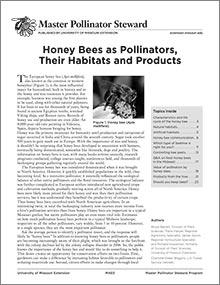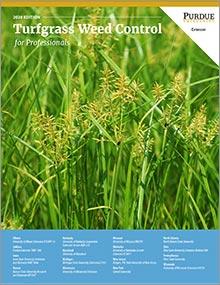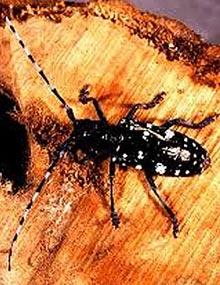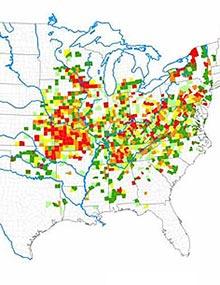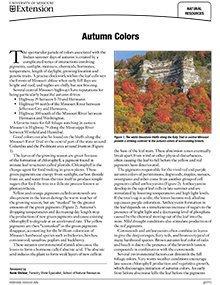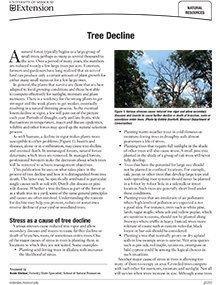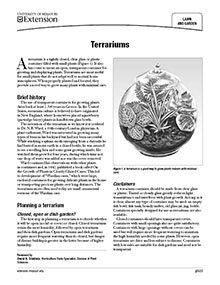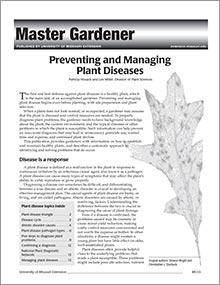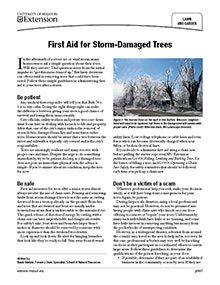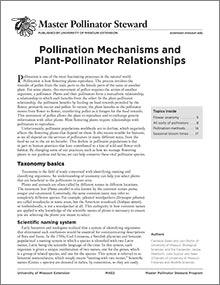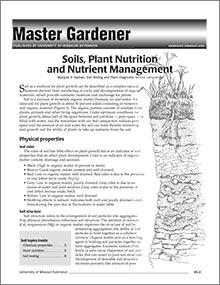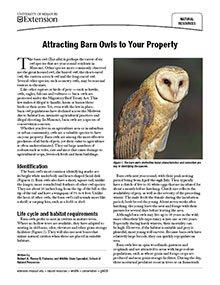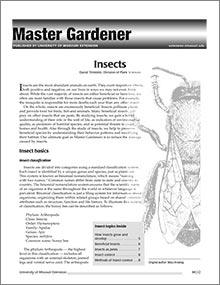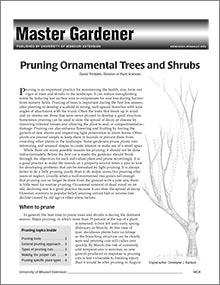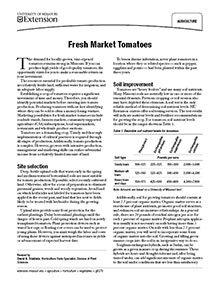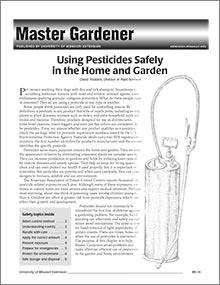The following publications cover topics related to Commercial Horticulture. For a complete list of MU Extension publications, visit the main Publications page.
Coping With Summer Heat
Reviewed
The heat of a Missouri summer not only can make for high utility bills, but also can be deadly. Here are some tips to help keep you comfortable, healthy and penny-wise.
Honey Bees as Pollinators, Their Habitats and Products
New
Learn about the honey bee, from its life cycle, to its various races, to its pest problems, the benefits it provides, and how we can aid its success in this University of Missouri Extension guide. Become a Master Pollinator Steward!
Tree Pests: Emerald Ash Borer
New
Emerald ash borer is an invasive, wood-boring insect that infests and kills native North American ash trees. Learn the signs, symptoms and management of EAB and how you can slow the spread on the University of Missouri Extension Tree Pests site.
Turfgrass Weed Control for Professionals (2020 Edition)
New
Editor's note
The following abstract describes a publication that is available for purchase from the Purdue Extension Education Store.
Tree Pests: Gypsy Moth
New
Introduction
Gypsy moth (Lymantria dispar) is a destructive, exotic forest pest that was accidentally introduced into the United States in 1869 by a man hoping to mate them with silkworms to create a hardier, more productive silk-bearer.
Tree Pests: Native Pests
New
Introduction
In addition to all of the nonnative, invasive tree pests challenging the health of Missouri’s trees, there are several native insects and diseases that can cause serious harm.
Tree Pests: Asian Longhorned Beetle
New
Introduction
The invasive Asian longhorned beetle (ALB) hitchhiked to the United States nestled deep within hardwoods cut into crates and pallets and used to import goods from Asian countries.
Tree Pests: Thousand Cankers Disease
New
Introduction
Although not yet detected here, thousand cankers disease (TCD) is a potentially fatal disease of black walnut, caused by the walnut twig beetle (Pityophthorus juglandis) and an associated fungus (Geosmithia morbida).
Autumn Colors
Reviewed
Tree Decline: What Is It?
Reviewed
Insects
New
Gain a better understanding of the role of insects in the web of life and as pollinators, indicators of environmental quality, predators of harmful species, and potential threats to crops, homes and health in this Master Pollinator Steward guide.
Caring for Houseplants
Reviewed
To many people, a home is not complete without attractive potted plants. Proper care of houseplants helps increase satisfaction and enjoyment from them and extends the blooming period of many flowering plants.
Terrariums
Reviewed
Preventing and Managing Plant Diseases
Revised $10
The first and best defense against plant diseases is a healthy plant. Visit our site to learn about Preventing and Managing Plant Diseases.
Vegetable Harvest and Storage
Reviewed
Timely harvest and proper storage help maintain the quality and freshness of garden vegetables. This publication describes how and when to harvest vegetables; special harvest preparations and storage requirements; and appropriate length and kinds of storage.
Exhibiting and Judging Garden Vegetables
Reviewed
Learn how to set up a vegetable exhibit, the factors vegetables are judged on, and conditions that could result in disqualification.
First Aid for Storm-Damaged Trees
Reviewed
Pollination Mechanisms and Plant-Pollinator Relationships
New
Pollination is one of the most fascinating processes in nature. Visit our site to learn about Pollination Mechanisms and Plant-Pollinator Relationships.
Soils, Plant Nutrition and Nutrient Management
Revised $10
Soil is a mixture of minerals, organic matter, air and water. Visit our site to learn about Soils, Plant Nutrition and Nutrient Management.
Insects
Reviewed $10
Chapter 12 of the Missouri Master Gardener Core Manual
Pruning Ornamental Trees and Shrubs
Reviewed $10
Pruning is an important practice for maintaining the health, size & vigor of trees. Visit our site to learn about Pruning Ornamental Trees and Shrubs.
Fresh Market Tomatoes
Revised
The demand for locally-grown, vine-ripened tomatoes remains strong in Missouri. If you can produce high yields of good-quality tomatoes, the opportunity exists for you to make a reasonable return on your investment.
Using Pesticides Safely in the Home and Garden
Revised $10
Chapter 14 of the Missouri Master Gardener Core Manual
Fruit Production
Reviewed $10
Most temperate zone fruits grow in Missouri. Learn how to raise strawberries, raspberries, blackberries, gooseberries, currants, blueberries, grapes, apricots, cherries, plums, nectarines, peaches, apples and pears in the Show-Me State.

